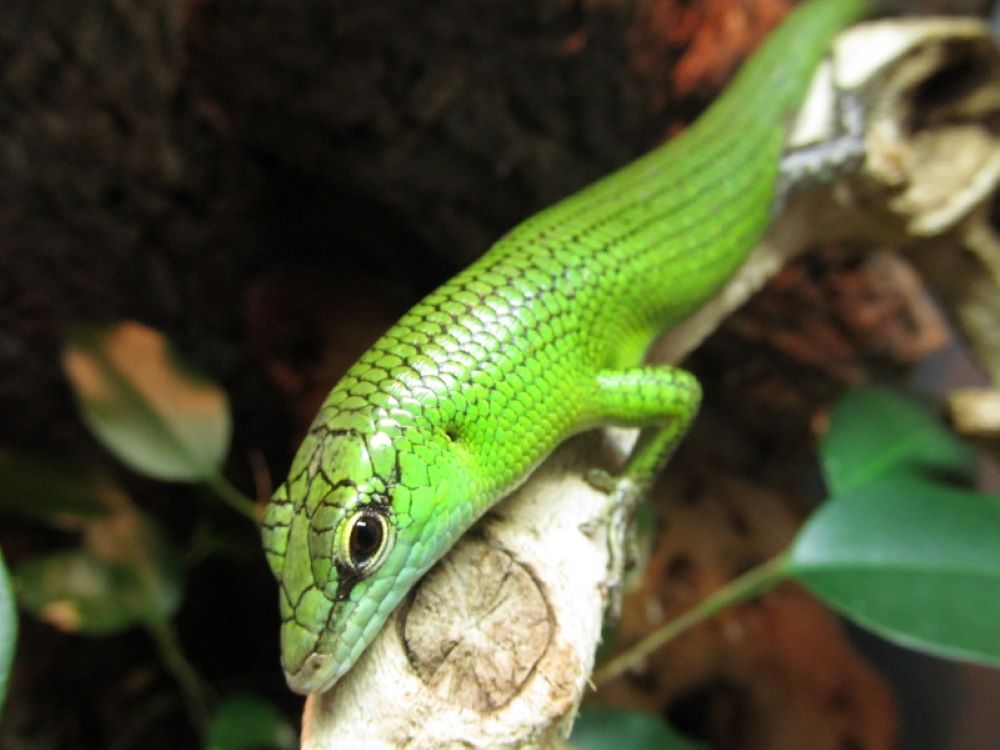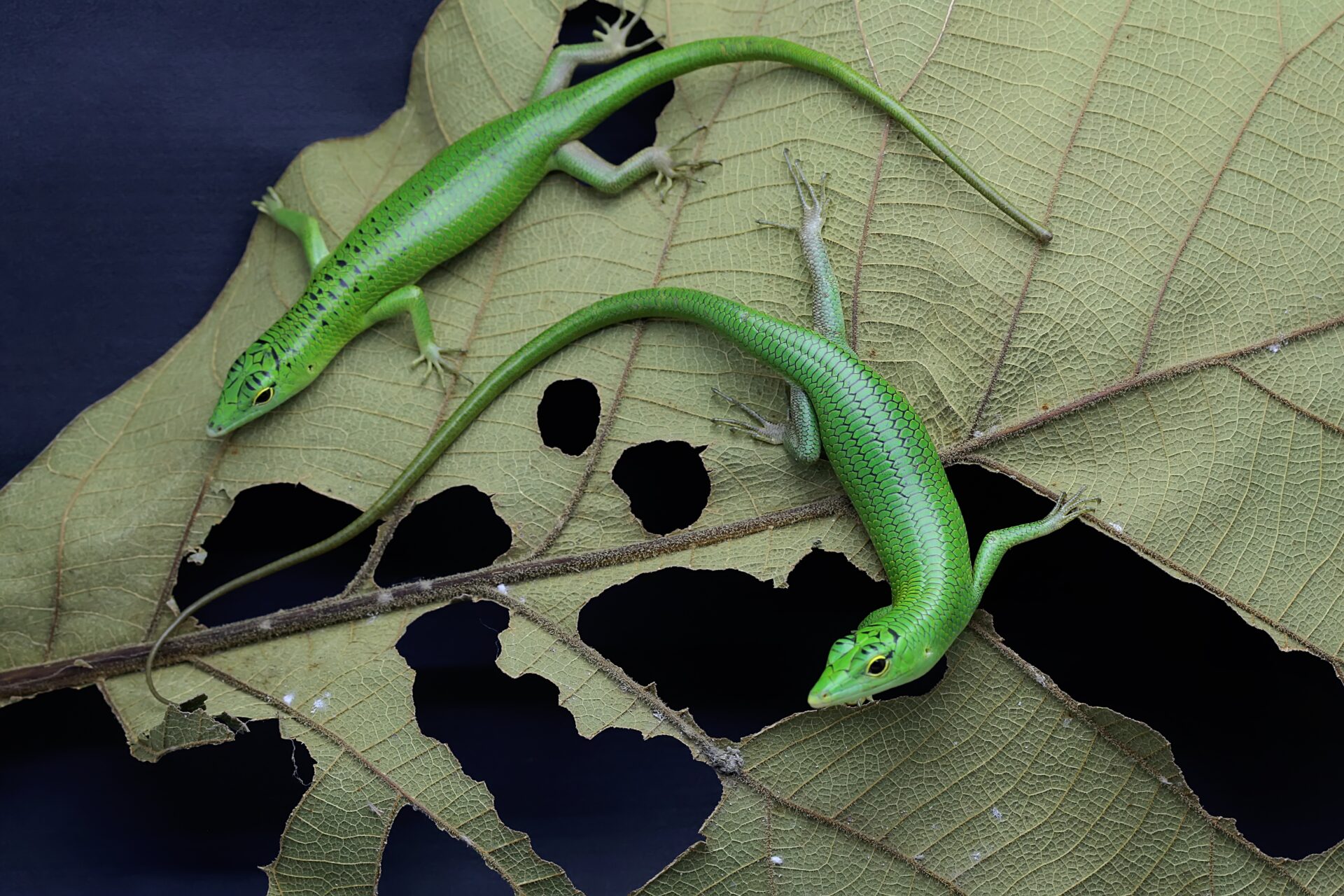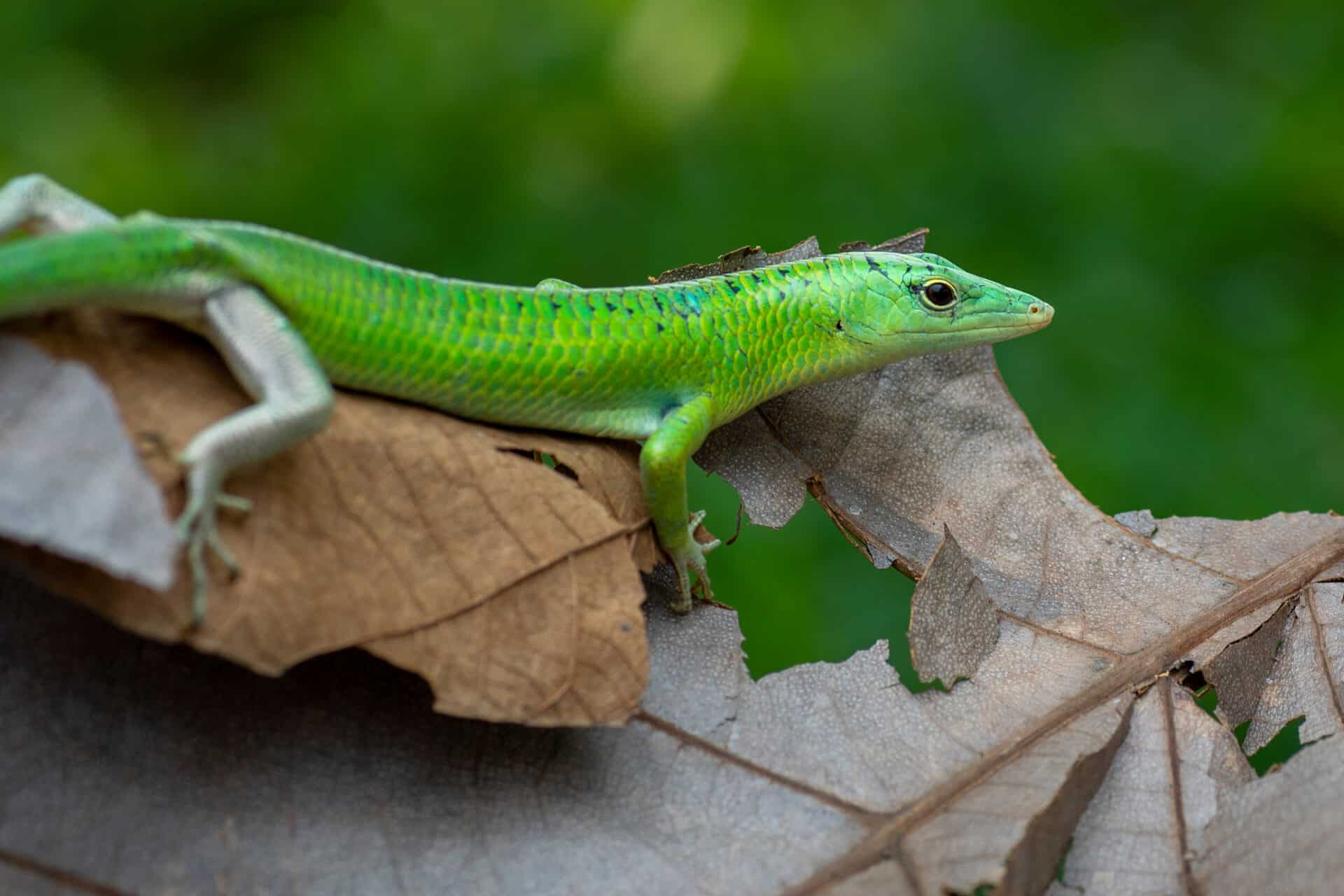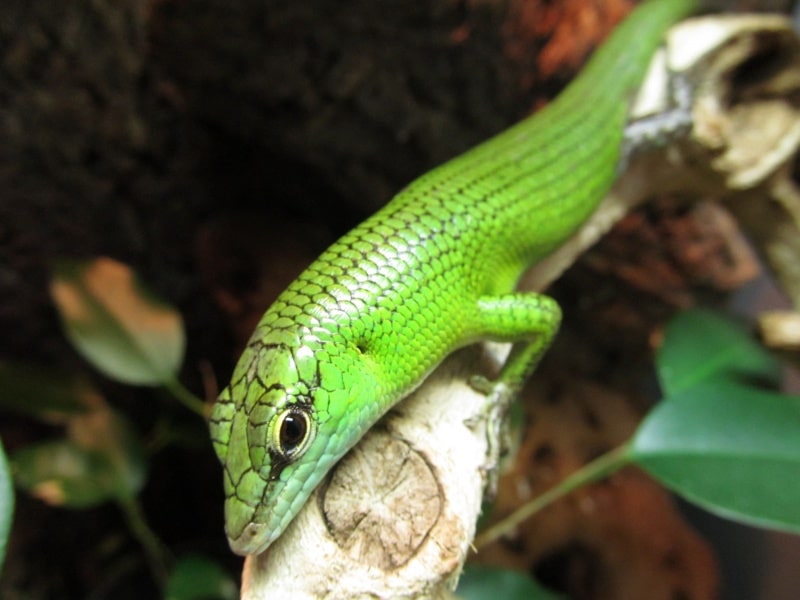Emerald skink
Common Name: Emerald skink
Scientific Name: Lamprolepis smaragdina
Skinks are the most diverse species of reptile. Emerald skinks vary in colour both within individual populations and with respect to the areas where they live. Usually bright, iridescent green, with a paler underside, these beautiful reptiles can also be brown or even blue with paler markings along their sides.
Emerald skinks, also known as spotted green tree skinks, are from the Lygosominae family of skinks. They have a thick body with a long, slender tail that extends one and a half times the length of its body. They have small, visible small ear openings in between their tapered snout and angular forelimbs.
Like many other species of skink, the emerald skink can shed its tail when threatened. The detached tail continues to move when dropped, which is thought to provide sufficient distraction for the skink to escape predation.
Fast Facts
-
Status
Least concern
-
Size
25cm
-
Weight
Insufficient data
-
Gestation
Eggs incubate for between 69 and 100 days before hatching
-
Young
Clutches of between 9 and 14 eggs are laid
-
Lifespan
4 years in the wild and up to 12 years in captivity
In the wild
Emerald skinks are primarily insectivores, their main source of food is insects and other small invertebrates, but they have been known to eat small amounts of fruit and flowering plants to supplement their diet.
Emerald skinks are endemic to the Philippines but are widespread across the islands of Indonesia. This species is also found across the islands of Bismarck, Marshall, Solomon and Santa Cruz islands and to the eastern most islands of Micronesia.
Emerald tree lizards are arboreal which means they spend nearly all their time up in the trees. They are unusual in that they are found in a wide range of habitats across their range, from open canopy lowland forests to mangrove swamps and even garden and parkland area trees in semi-rural areas.
Emerald skink males are territorial and will actively protect the breeding rights to all females in their territory. When both defending territory and courting females, emerald skinks have been seen bobbing their heads towards each other.
Females lay clutches of eggs under loose tree bark where they will incubate for between 69 – 100 days.
In the wild emerald skinks are predated upon by birds of prey, snakes and carnivorous marsupials native to their Island habitats.
Emerald skinks are found in large numbers across a wide range of different habitats, including protected areas. As there are no major threats to the Emerald skink, there are no species-specific conservation measures currently in place.



